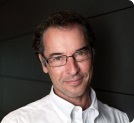 |
| Novo CEO Lars Rebien Sørensen |
Novo Nordisk ($NVO) executives led by President and CEO Lars Rebien Sørensen noted competition from local companies in China and Sanofi ($SNY) as the key reasons for weak sales in the Middle Kingdom in the second quarter.
Novo Nordisk's first-half China sales surged by 25% in Danish kroner, but the increase in the yuan was a modest 3%, with sales down 6% in yuan on a mix of timing of shipments and competition.
But Jakob Riis, executive vice president for China, Pacific & Marketing, and Mads Krogsgaard Thomsen, executive vice president and chief science officer, said on the Aug. 6 earnings call that the longer-term story hinges on new approvals and a bit of marketing savvy.
First, Sorensen was asked the first of several questions on China and talks about getting slapped around.
"In terms of China, yes, it's correct that we're sort of getting slapped from two sides, in the sense that Sanofi is doing well with the gold standard so far in the basal market with Lantus," Sorensen said.
"Then we have a local competitor with a generic version of Lantus, which obviously, with a slight more aggressive pricing, has impact in the market. And then we're getting slapped also by the local manufacturers on human insulins ... because the bidding and the use of human insulins are more extensive in the rural areas, and that is where the local manufacturers have more clout and are able to outcompete us. So that's the current situation and one of the remedies is, of course, longer term getting Tresiba approved in China and then also support the mixed market with the Ryzodeg."
 |
| Novo CSO Mads Krogsgaard Thomsen |
That long answer then set up Thomsen to give some color on what the regulatory process and timelines for filing are of Victoza in Type 1 diabetes in China and what the plan is for Xultophy.
"Tresiba is of course also important in China, as it is all over the world, and we are making inroads into getting towards a filing situation," Thomsen said. "And to that end, you will recall we did a Chinese Phase III study that actually completed more than a year ago, but you need a lot of administrative things to happen before you can submit. But we are making progress in that regard."
"And only thereafter, actually, can you progress the combination products, because the Chinese rules from the CFDA, they mandate that you first have the mono components into the system and then you can file a dual component system like Ryzodeg. But we are making progress. It just takes longer time than in the western world, so to speak."
Those somewhat downbeat assessments were then refined as Sørensen said that the end of the year may bring "a different perspective on China."
That also gave Riis an opportunity to discuss what could go right in China.
"The strategy remains the same and, as Lars indicated, we have followed through on an expansion of the field force to go yet again into the smaller community hospitals, where also the Chinese government intends to move some of the treatment of diabetes," Riis said.
"And with 100 million people with diabetes in China, we need to be firmly positioned in all areas of China and in all regions and all the institutions, and that's the strategy we're pursuing and then with the current portfolio. But we just have to get used to that the market will operate with growth rates that are lower than we've seen historically, but growth for sure."
Elsewhere in Asia, Sørensen was upbeat about Tresiba in Japan and Ryzodeg launches in India and Bangladesh as well as Mexico that received "positive" feedback.
"In Japan, where Tresiba was launched in March of 2013, Tresiba has reached 30% of the basal insulin market measured by volume value market share--monthly value market share," Sorensen said.
- here's the Novo Nordisk release and presentation